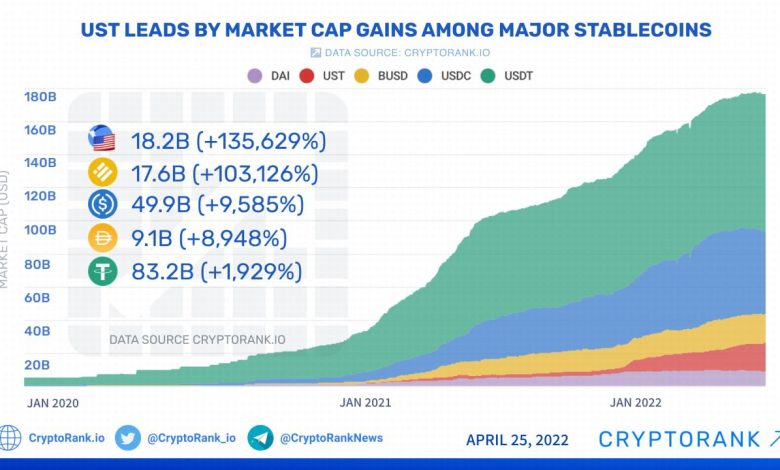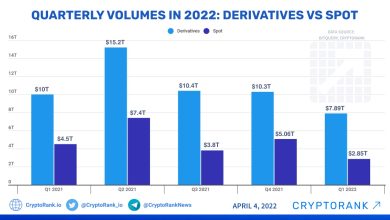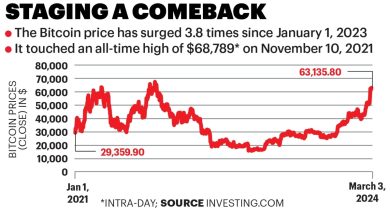Crypto Market Trends: Stablecoins Gaining Popularity

- Understanding the Rise of Stablecoins in the Crypto Market
- The Role of Stablecoins in Mitigating Volatility in Cryptocurrency Trading
- Comparing Stablecoins to Traditional Cryptocurrencies: What Sets Them Apart?
- Exploring the Various Types of Stablecoins Available to Investors
- Regulatory Challenges and Opportunities for Stablecoins in the Crypto Market
- The Future of Stablecoins: Predictions and Projections for Market Adoption
Understanding the Rise of Stablecoins in the Crypto Market
Stablecoins have been gaining traction in the crypto market due to their ability to provide stability in an otherwise volatile environment. These digital assets are pegged to a stable asset, such as a fiat currency like the US Dollar or a commodity like gold, which helps mitigate price fluctuations. As a result, stablecoins offer a reliable store of value and a medium of exchange for users looking to avoid the extreme price swings associated with other cryptocurrencies.
One of the main reasons for the rise of stablecoins is the growing demand for a more stable and predictable digital currency. Traders and investors are increasingly turning to stablecoins as a safe haven during times of market uncertainty. Additionally, stablecoins offer a convenient way to transfer value across borders quickly and at a low cost, making them an attractive option for international transactions.
Another factor driving the popularity of stablecoins is the increasing regulatory scrutiny facing traditional cryptocurrencies. Stablecoins, with their pegged value and transparency measures, are seen as a more compliant option by regulators and financial institutions. This has led to a surge in the issuance of stablecoins by both centralized and decentralized platforms, further solidifying their position in the crypto market.
The Role of Stablecoins in Mitigating Volatility in Cryptocurrency Trading
Stablecoins play a crucial role in mitigating volatility in cryptocurrency trading. These digital assets are designed to maintain a stable value by pegging them to a reserve asset, such as a fiat currency or a commodity. By providing a reliable store of value, stablecoins help traders hedge against the extreme price fluctuations commonly seen in the crypto market.
One of the main advantages of stablecoins is that they offer a safe haven for investors during times of market turbulence. When the value of major cryptocurrencies like Bitcoin and Ethereum experiences sharp declines, traders can quickly convert their holdings into stablecoins to protect their capital. This ability to swiftly move in and out of volatile assets helps reduce the overall risk exposure in a trader’s portfolio.
Furthermore, stablecoins facilitate seamless trading across different cryptocurrency exchanges. Since stablecoins are not subject to the same price volatility as other digital assets, they provide a convenient medium of exchange for buying and selling cryptocurrencies. This stability makes it easier for traders to execute trades quickly and efficiently, without having to worry about sudden price swings.
Comparing Stablecoins to Traditional Cryptocurrencies: What Sets Them Apart?
When comparing stablecoins to traditional cryptocurrencies, it is important to understand the key differences that set them apart. While both stablecoins and traditional cryptocurrencies operate on blockchain technology, stablecoins are designed to have a more stable value compared to the volatility often seen in traditional cryptocurrencies like Bitcoin and Ethereum.
One of the main factors that differentiate stablecoins from traditional cryptocurrencies is their pegged value to a stable asset such as the US dollar or gold. This pegging mechanism helps stabilize the price of stablecoins, making them less prone to the price fluctuations that are common in the crypto market.
Another key difference is the use case of stablecoins. While traditional cryptocurrencies are often used as speculative investments or as a means of transferring value, stablecoins are primarily used for everyday transactions and as a store of value. This makes stablecoins more suitable for use in e-commerce, remittances, and other financial applications where price stability is crucial.
Overall, stablecoins offer a more stable alternative to traditional cryptocurrencies, making them an attractive option for users who are looking for a reliable store of value or a medium of exchange in their daily transactions.
Exploring the Various Types of Stablecoins Available to Investors
Stablecoins have become increasingly popular among investors in the crypto market due to their ability to maintain a stable value by being pegged to a reserve asset. There are various types of stablecoins available, each with its own unique characteristics and mechanisms. Here are some of the most common types of stablecoins that investors can explore:
1. **Fiat-Collateralized Stablecoins**: These stablecoins are backed by fiat currencies such as the US Dollar, Euro, or Japanese Yen. Examples of fiat-collateralized stablecoins include Tether (USDT), USD Coin (USDC), and TrueUSD (TUSD). Investors can easily convert these stablecoins back into fiat currency at a 1:1 ratio.
2. **Crypto-Collateralized Stablecoins**: Unlike fiat-collateralized stablecoins, these stablecoins are backed by other cryptocurrencies. The value of these stablecoins is maintained through over-collateralization, where the issuer holds a higher value of cryptocurrencies than the stablecoin in circulation. Examples of crypto-collateralized stablecoins include DAI and sUSD.
3. **Algorithmic Stablecoins**: These stablecoins use algorithms to automatically adjust the supply based on demand in order to maintain a stable value. One of the most well-known algorithmic stablecoins is Ampleforth (AMPL), which adjusts its supply daily based on market conditions.
4. **Commodity-Collateralized Stablecoins**: These stablecoins are backed by physical assets such as gold or silver. The value of these stablecoins is tied to the value of the underlying commodity, providing investors with a stable store of value. Examples of commodity-collateralized stablecoins include Digix Gold (DGX) and Paxos Gold (PAXG).
Investors can choose from a variety of stablecoins based on their preferences and risk tolerance. Each type of stablecoin offers unique benefits and drawbacks, so it is essential for investors to conduct thorough research before deciding which stablecoin to invest in. By exploring the various types of stablecoins available, investors can diversify their crypto portfolios and mitigate risk in the volatile crypto market.
Regulatory Challenges and Opportunities for Stablecoins in the Crypto Market
Stablecoins have been gaining popularity in the crypto market due to their ability to provide stability and security to investors. However, along with their rise in popularity, stablecoins also face regulatory challenges and opportunities that need to be addressed.
One of the main regulatory challenges for stablecoins is the lack of clear guidelines and regulations from government authorities. This uncertainty can create a barrier for stablecoin issuers and users, as they may not know how to comply with existing laws or what the future regulatory landscape will look like.
On the other hand, regulatory clarity can also present opportunities for stablecoins to thrive in the market. By working closely with regulators and policymakers, stablecoin issuers can help shape the regulatory framework to ensure the stability and legitimacy of their assets.
Another regulatory challenge for stablecoins is the potential for money laundering and terrorist financing. Due to the pseudonymous nature of blockchain transactions, there is a risk that stablecoins could be used for illicit activities. This has led regulators to implement stricter Know Your Customer (KYC) and Anti-Money Laundering (AML) requirements for stablecoin issuers.
Despite these challenges, stablecoins also offer opportunities to improve financial inclusion and access to digital assets for underserved populations. By providing a stable store of value and a reliable medium of exchange, stablecoins can help bridge the gap between traditional banking systems and the unbanked or underbanked.
The Future of Stablecoins: Predictions and Projections for Market Adoption
The future of stablecoins looks promising as they continue to gain traction in the crypto market. Experts predict that stablecoins will play a significant role in the adoption of cryptocurrencies by mainstream users and businesses. With their ability to maintain a stable value by being pegged to a fiat currency or a basket of assets, stablecoins offer a reliable store of value and a medium of exchange.
One of the key drivers of stablecoin adoption is the growing interest from institutional investors and large corporations. These entities are looking for a more stable alternative to traditional cryptocurrencies like Bitcoin and Ethereum, which are known for their price volatility. Stablecoins provide a way to transact in digital assets without being exposed to the same level of risk.
Another factor contributing to the rise of stablecoins is the increasing regulatory clarity around these digital assets. Regulators around the world are starting to recognize the importance of stablecoins in the financial ecosystem and are working on creating a framework to govern their use. This regulatory certainty will help to build trust among users and encourage more widespread adoption of stablecoins.





